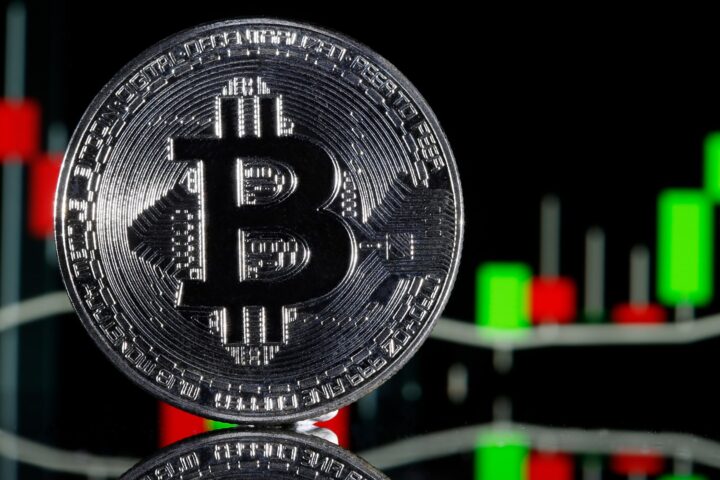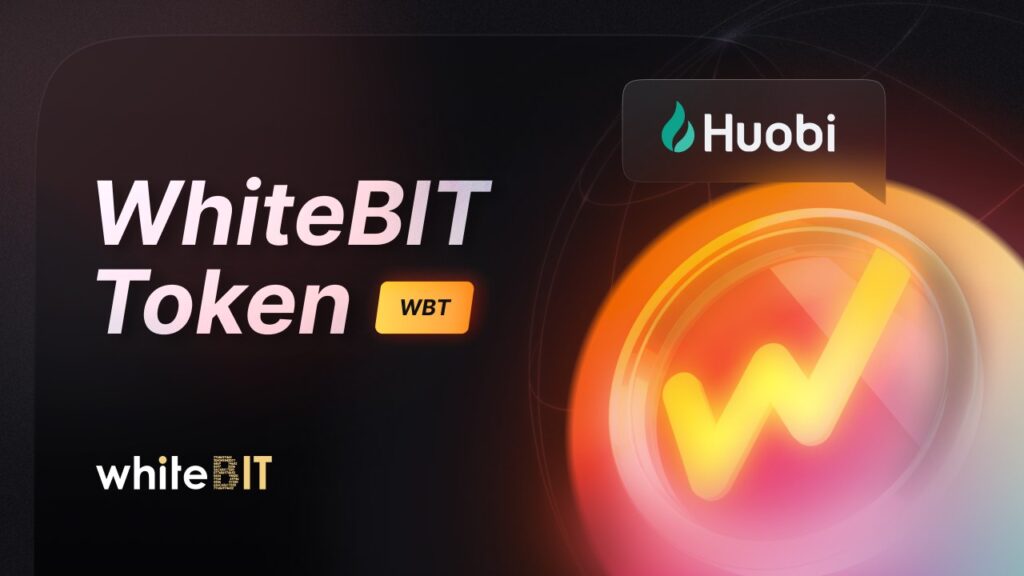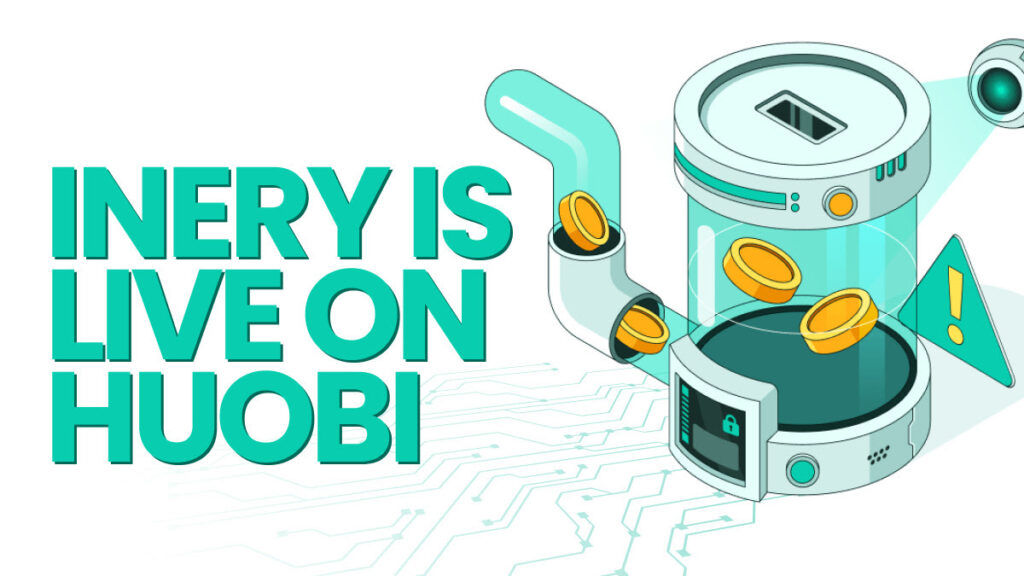Building on recent success, Supermoon Camp together with The Web3 Gallery just held its Mainnet Gala during Messari Mainnet week. Mainnet Gala welcomed over 300 executives, investors and talented entrepreneurs for three hours of networking and an immersive art experience.
Supermoon is bridging together executives, investors and founders with a mission to elevate the Web3 space. Mainnet Gala was a successful result of Supermoon’s effort to achieve its mission, revealing future plans, including the Supermoon 2023 initiative that will go beyond high-impact events to facilitate the growth of Web3 projects at the very beginning of their journey.
Supermoon is bringing onboard reputable advisors, mentors and entrepreneurs to enable the Supermoon 2023 initiative and its goal to advance the Web3 space.
Not stopping, Supermoon will embark on another Supermoon Camp during Art Basel this Nov. 30 to Dec. 5. The renowned five-day pop-up event unites crypto eclectics and thought leaders at a private venue in Miami for innovative collaborations, talks and relationship-building. The last night of the camp will culminate with the legendary Mansion on the Moon event at a secret venue in Miami.
Supermoon Camp helps professionals build genuine and lasting relationships through an exclusive community of blockchain innovators, enthusiasts and high-impact networking events.
Web3 Gallery is the world’s first crypto, Metaverse, Web3 gaming and NFT experience, quickly becoming a hub for Web3 innovations.
Socials
A landmark partnership between ITV Studios and Reality+ means fans will soon be able to buy and trade officially licensed nonfungible token (NFT) artwork based on the classic TV show Thunderbirds.
ITV Studios has partnered with Reality+ to create the “Thunderbirds: International Rescue Club,” a premium, utility-focused NFT community experience that represents an exciting reimagining of the classic property’s unique style and vision for the 21st century.
Owners of Thunderbirds: International Rescue Club artworks will be granted access to their own unique avatar for use in The Sandbox metaverse alongside unique competitions, giveaways, free drops and official merchandise, and a generative art drop on Sept. 30.
Sebastien Borget, co-founder and chief operating officer of The Sandbox, said, “We’re pleased to partner up with ITV Studios and Reality+ to launch the legendary Thunderbirds franchise into the metaverse. The Sandbox continues to bring culture and entertainment with Thunderbirds, allowing fans to own, play and become creative as they imagine and bring to life new adventures and stories with their characters of the original series.”
The project will also give holders the opportunity to take part in real-world “Rescue Missions,” in which funds generated via the Thunderbirds: International Rescue Club’s NFT sales will be used to aid charities and good causes around the world.
The Rescue Missions
Thunderbirds: International Rescue Club is an international organization set up to change the world, one rescue mission at a time. A global community of Thunderbirds fans all over the world joining together to support our missions. The project has raised 7,500 British pounds of its fundraising goal, and as part of the launch this week, 20% of all future sales go directly toward helping charities like Dobrich Dog Rescue. The community will help to decide what future missions Thunderbirds: International Rescue Club undertake.
Mission 1 took place at Dobrich Dog Rescue in Bulgaria, a charity that rescues and rehomes stray dogs.
Bankrupt crypto lender Celsius Network said on Friday it is not seeking to enforce payment obligations for outstanding loans during its Chapter 11 proceedings and that borrowers do not need to repay such loans.
New Jersey-based Celsius said no interest or penalties will be assessed post loan maturity, in a filing at the U.S. Bankruptcy Court for Southern District of New York.
Celsius filed for bankruptcy in July, with estimated assets and liabilities between $1 billion to $10 billion, with more than 100,000 creditors.
The lender also listed a $1.19 billion deficit on its balance sheet and had about 23,000 outstanding loans to retail borrowers totaling $411 million backed by collateral with a market value of $765.5 million in digital assets, as of July 13 this year.
Follow Crypto Intelligence on Google News to never miss a story
With massive festivals and clubs partners, such as Amnesia Ibiza, World Club Dome, Green Valley, Supersonic, We Are Fstvl, Caprices, Junction 2 and many more to come, The List will be the only one you’ll want your name to be on.
The List is setting a foundation in the form of establishing partnerships with some of the best clubs and festivals and building a community around this first nonfungible token (NFT) collection, on which Klubcoin is going to continue building, indeed many partners of The List are also part of the Klubcoin ecosystem.
The wristbands
7,777 unique NFT wristbands will be minted, each of which will be adorned with a slug coming from the dance music lexicon, with various categories, colors, backgrounds and styles to ensure the rarity of the items of the collection.
“I play vinyl,” “You are not on the list,” “We prefer Z to A,” “Techno,” “Burning man changed my life” or “I hate airports” will be part of many different words and expressions coming from the scene’s terminology. Each wristband carries the rave culture wherever it goes.
The 3D modeling, design and concept execution of the project is done by Broken Egg.
Generative 3D rendering will be used to create the 7,777 NFTs with more than 130 traits and millions of possible renditions, which will be immortalized on the blockchain.
The lucky owners of the two rarest categories will receive a physical bracelet, the in-real-life version of their NFT.
Lifetime access
More than 150 exclusive items of the collection will grant lifetime access to worldwide famous clubs and festivals, such as Amnesia Ibiza (Spain), World Club Dome (Germany), Green Valley (Brazil), Supersonic (India), We Are Fstvl (United Kingdom), Junction 2 Festival (United Kingdom), Caprices Festival (Switzerland), Rampage Open Air (Belgium), Barcelona Beach Festival (Spain) and many more.
This non-exhaustive list of iconic clubs and events is already growing and will be revealed a few days before the drop.
Exclusive shows by The List
Electronic music fans will have two more events to look forward to. The List in collaboration with Clubbing TV is going to organize a show during Art Basel in Miami (December 2022.) and a festival in Croatia (August 2023.). All of The List NFT holders are going to have an exclusive privilege to join these two events and meet their favorite artists.
In the metaverse
In addition to the IRL experiences, owning a wristband from The List will give you a wearable perk in one of the biggest metaverses, Decentraland. The wearable NFTs powered by DJenerates and Decentral Games will be airdropped to more than 5,000 selected owners of the collection, giving access to exclusive events in the metaverse and to the VIP area of the Amnesia and JENR8 virtual clubs.
Whitelisting for the future party in the metaverse to be launched by Clubbing TV will be granted to all The List holders for future land sales.
Other perks
Owning a The List NFT is going to unlock a few other benefits: participation in weekly giveaways, where you could win signed merch from an artist, LP box sets, tickets to hyped events and exclusive access to new releases.
Also, The List holders are going to have the power to create and manage a podcast and a TV show on Clubbing TV.
JOIN THE LIST:
- Discord: https://discord.gg/zm8DUACHEy
- Twitter: https://twitter.com/The_ListProject
- Website: https://thelist.clubbingtv.com/
- Premint: https://www.premint.xyz/the-list-project/
Today we are happy to announce the launch of Sociogram. The first social network with a focus on decentralization and security.
Sociogram respects the basic human right of freedom of speech. With the help of decentralized protocols, it allows you to return this right that traditional social networks have stripped you of.
We also stand for:
- Freedom of choice and freedom of sharing.
- The right of users to own their content and dispose of it, including selling or buying directly from other users if needed.
- Self-regulation of content, which means that users can act as moderators and decide the fate of any questionable content.
What it is
With Sociogram, you can communicate, create, share your content and search for users with similar interests. It is a perfect match for those who want to produce and distribute their visual or text content freely and be able to express any opinion without restrictive algorithms or shadow bans.
Sociogram does not own user-generated content, which removes the possibility of editing, deleting or banning user-generated content, as the platform has no right to do so.
Sociogram is based on Web3 principles, and freedom of speech and uses blockchain technology to store the content in the ERC1155 token standard, which allows users to own the content they’ve created, unlike mainstream social networks. In traditional social networks, users transfer content ownership rights to the platform after publication.
Why we built it
We believe that online privacy is of key importance now, and everyone has the right to keep their data secret. With Sociogram, you don’t have to worry about data leaks.
Like everyone else, we are fed up with targeted ads. Actually, we see it as personal boundary violations. We aim to protect your personal data from marketers, advertisers and scammers while encouraging open communication.
No ads, no content curation, no personal data collecting, no data resale.
With Sociogram, it is impossible to collect data for subsequent use for any kind of manipulation, like the one we’ve seen with the Facebook–Cambridge Analytica data scandal.
We stand against the imposition of any content and blatant mind control. There are no hidden algorithms, no censorship or any kind of content manipulation on Sociogram. Any content imposition or shadow bans are nonexistent. Sociogram shows the content of your subscriptions in chronological order without any curation algorithms.
Why it’s secure
Sociogram is built with an emphasis on decentralization and gradually applies decentralized blockchain protocols without affecting the user experience.
Sociogram is a more secure social network compared to mainstream ones, as it is based on blockchain technology and doesn’t store any personal data. What Sociogram stores are usernames and public account addresses. Your profile assets are also safe, as Sociogram doesn’t have any access to them.
The only authorization method is via Web3. It lets you log in quickly and easily, without disclosing personal information sensitive to a data breach, like your email or phone number. You are not forced to use your real name either — you can choose any username you want.
As Sociogram is based on the principles of freedom of speech and privacy, we stick to the General Data Protection Regulation requirements so we neither use your data for targeted ads nor disclose it to third parties. You can learn more about Sociogram security here.
Messenger
To ensure maximum security, chats in messenger are always protected by end-to-end encryption. This means that only you and your contact can read them. Encryption and decryption keys are individual for each user, which increases the level of communication security.
We are creating a new reality where personal data is always personal.
There are three levels of security that you can choose from in security settings:
- Light
- Medium (set as default)
- Advanced.
We’re holding a Web3 meme contest now with a $15,000+ prize. The results will be on October 14. More info on our website.
Follow Crypto Intelligence on Google News to never miss a story
At Token2049 today, with over 7,000 industry professionals, institutional investors and regulators attending, KyberSwap CEO Victor Tran predicted onstage that decentralized finance (DeFi) will overtake TradFi in 10 years. On top of that, KyberSwap will also be the most used decentralized exchange (DEX) because of its innate ability to provide the best rates in all of DeFi.
Speaking on the panel “Decentralized Exchanges: The Road Ahead” along with co-founders from 1inch Network and Mantra, Tran declared that consumers in the future will value privacy and control, especially considering developments around the world today.
“Today, users are still exposing their data as people can see what your wallets hold and what transactions you make at what prices. Users still participate in DeFi, as it is a good option to earn while having custody of your own assets. The next step, naturally, will be privacy in order to protect their privacy. Together with that, major use cases like insurance will be increasing in a major way in order to provide more protection to users,” said Tran.
With privacy building through the bear market, improving security measures for users is a priority for the industry. “It is important to provide stability to users, as they are still dealing with the massive volatility and blowout in the markets with the downturn as well as several security issues like hacks in the market with lots of losses. In the short term, KyberSwap is focusing on providing stable DeFi earning potential all throughout the bear market at least for the next one and a half years with major liquidity mining campaigns with our chain partners and project partners like Polygon Chain, Avalanche Network, Lido Finance and QiDao,” Tran elaborated.
As DeFi expands, use cases build and leaders in decentralization who continually increase their ecosystem integration and UI/UX, such as KyberSwap, will go on to build the DeFi space to the extent where using a decentralized exchange and services will be as easy as using a digital banking app, or possibly even easier. This increased ease of use will attract a new generation of users and the unbanked, leading to more people choosing to onboard with crypto, especially the large and increasingly tech-savvy demographics of the world, such as Asia, Latin America, Africa and so on. Considering these key factors, Tran believes DeFi will “flip” traditional finance (TradFi) as a dominant force in the financial world in 10 years.
Tran said that institutions will increasingly participate in DeFi as well: “Institutions value security, infrastructure and privacy protection in order to support their needs, which are completely different from the retail users. We will unlock many infrastructure layers, application layers and privacy-focused features soon in DeFi, which will also bring in large amounts of institutional funds.”
As a DEX aggregator, KyberSwap currently provides users the best swap rates on 12 chains along with the mission to make DeFi easy, accessible, safe and rewarding for all users around the world. “Ultimately, at the end of the day, it is about making users’ lives easier. KyberSwap’s focus is 100% about maximizing users’ benefits and safety. What we see with decentralized finance is just starting, and it will grow exponentially. KyberSwap sees a tipping point in the next decade, and we are working endlessly to be an essential pillar of that future,” said Tran, closing his remarks.
About Kyber Network
Kyber Network is building a world where any token is usable anywhere. KyberSwap.com, our flagship DEX aggregator and liquidity platform, provides the best rates for traders in DeFi and maximizes returns for liquidity providers.
KyberSwap powers 100+ integrated projects and has facilitated over $10 billion worth of transactions for thousands of users since its inception. It’s currently deployed across 12 chains — Ethereum, BNB Chain, Polygon, Avalanche, Fantom, Cronos, Arbitrum, Velas, Aurora, Oasis, BitTorrent and Optimism.
Follow Crypto Intelligence on Google News to never miss a story
On Aug. 25, 2022, the WhiteBIT cryptocurrency exchange debuted its native token. Four weeks after being added, WhiteBIT Token is moving on to the next world-leading crypto platform. On Sept. 22, at 11 am (UTC), the WBT/USDT trading pair also became available on Huobi.
WhiteBIT Token became famous before its launch due to a list of bonuses and privileges it provides. The crypto community is still showing great interest in owning WBT. Users bought the first million tokens just 15 minutes after launch.
WhiteBIT Token provides exclusive opportunities to its holders:
- Reduced maker and taker fees
- Free Anti-Money Laundering checks
- Free withdrawals of ERC-20 tokens
- Up to 50% referral rates.
The token’s creators also announced that more WBT use cases are coming as the exchange plans to integrate the asset into the state economy sector later.
WBT is also known for its price, as it became worth $7.08 after the first week of trading, with an initial price of $1.9. WhiteBIT aims to support the overall interest through weekly burnings. It bought and destroyed over 4 million tokens for $22,609,198. WhiteBIT will use the combustion mechanism until it has destroyed 50% of the total supply of 400 million tokens.
A strong marketing campaign also backs WBT. The first trading competition and an airdrop were an instant success, attracting more and more attention to the young, promising asset. It is clear that WBT has a well-balanced strategy, and new achievements await it shortly.
Zebu Live, the United Kingdom’s leading crypto, blockchain and Web3 conference, has announced the successful conclusion of its two-day flagship event.
The conference took place in Kensington from Sept. 22 to 23, and saw over 2,000 members of the Web3 space in attendance. Over 150 of the industry’s most prominent and prolific pioneers shared their insights through speeches, workshops and panel discussions.
Some highlights of the event included a keynote speech from MP Matt Hancock, in which he stated: “The Queen was a supporter of crypto assets. […] She supported the British Blockchain Association. […] Now, the key is to use the opportunity of a new government to have a fresh start in the attitude and approach to digital assets, to cryptocurrencies, and to the use of the underlying blockchain technology.”
Highlights from Zebu Live also included a fireside chat with serial entrepreneur Steven Bartlett, who stated: “I think industries where centralization and a lack of transparency and a lack of verification are problems, those are going to change rapidly over the next few years due to blockchain […] So I don’t think Web3 is going to eat up every industry, but there is going to be a real war against industries which have those problems.”
In addition, the event featured numerous panel discussions with thought leaders and visionaries within Web3, a selection of which are highlighted below:
- The future of the crypto exchange
- Fashion enters the Metaverse
- Integrating NFTs into gaming ecosystems
- Bringing the power back to the artists with music NFTs
- Women in Web3
- Optimizing rewards and minimizing risk with DeFi
There were also a number of spotlight presentations throughout the event, from leading projects and organizations within the industry. These include:
- Arrested development: The risks and opportunities in the private DeFi space with Panther Protocol
- Bringing music into Web3 with Dancing Seahorse
- Scaling Metaverses and Web3 apps with Cudos
- Designing a Web3 strategy with Tezos
- Swapsicle: A DEX but with more flavor
- Stablecoins: Mass adoption vs. decentralization with NEAR Protocol
The full recording of the first day’s main stage talks from Zebu Live can be found here, and the full recording of the second day main stage talks can be found here.
Commenting on the event, Zebu Digital CEO and founder of Zebu Live Harry Horsfall stated: “We couldn’t be happier with how things went with Zebu Live. To see such an amazing turnout from so many distinguished individuals and organisations — both in Web3 and Web2 — is a testament to how prolific the interest is around this new frontier industry. The adoption of blockchain and Web3 cannot be stopped, and it’s the speakers, contributors and attendees present at Zebu Live who are pushing the boundaries of this burgeoning space. Next year is going to be even bigger and better — watch this space!”
At the end of the second day, the Zebu Live team announced that the third installment of its flagship event will be taking place on Oct. 5 and 6, 2023. Super early bird tickets are now on sale for the event, which is set to feature more speakers and attendees than ever before.
Follow Crypto Intelligence on Google News to never miss a story
Crypto companies were undeterred by initial failure to obtain licences to operate in Britain and were submitting new applications, the Financial Conduct Authority said on Thursday.
The FCA has been criticised by lawmakers and the crypto sector for being slow in processing licence applications and for rejecting swathes of applicants despite the UK government’s push to make London a global crypto hub.
“It’s no surprise that I still see many crypto firms still seeking to get licences here in the UK even though some have been denied those licences at the first pass,” FCA executive director for competition and consumers Sheldon Mills told a City & Financial conference.
“They know we have a good system of regulation and if they meet our standards that’s important for every jurisdiction that they seek to apply for around the world,” Mills said.
“That is a benefit to the UK economy and UK financial service industry, and is good for competition, inward investment and growth.”
Crypto firms are scrutinised by the FCA for their ability to stop their operations being used for money laundering or financing terrorism.
In March, the FCA said that 90% of crypto firms seeking approval for their anti-money laundering controls have either withdrawn their applications or been refused because they could not meet the standards.
Mills said 95 people have been hired to the watchdog’s authorisations team and the pending caseload has fallen by 40%.
“Over time, we expect faster, better decisions will support us in bringing down the costs of the regulatory system,” Mills said.
Jean-Marie Mognetti, chief executive of crypto asset manager CoinShares, said the company chose to list in European Union member state Sweden because Britain and the FCA were “not very keen” to see any crypto companies in London.
Mognetti said the European Union’s new set of ‘MiCA’ rules for fully licensing crypto firms will put the EU at an advantage over Britain.
“If you talk about attractiveness from a regulated activity [perspective], the fact that London is not part of MiCA and will not have passporting in Europe… is going to be a massive handicap,” Mognetti said.
Under a draft law now before parliament, Britain will licence stablecoins, but leave the rest of the cryptoasset industry for a later date.
Follow Crypto Intelligence on Google News to never miss a story
Singapore, Singapore, 28th September, 2022, Chainwire
$INR is live on Huobi, after successful VC rounds and several strategic partnership announcements. Trading officially opened at 13:00 UTC today, September 28th and the project saw its token trending up from $0.22 to $0.44 within the first few hours. The listing is an important milestone for Inery on its journey to revolutionize how data is handled on the decentralized web.
Inery, a decentralized data system envisioned to enable a new paradigm for data management, has been listed on Huobi exchange, one of the world’s leading crypto exchanges, supporting over 1000 trading pairs and more than 600 cryptocurrencies. This will help bring Inery’s vision to the markets and onboard more people in its mission to reshape the world through the paradigm shift in data management.
Inery Decentralized Data System
Specifically designed to address database management by integrating blockchain functionalities and distributed database properties, this project aims to enable interoperability between different industries without compromising security, speed, or performance.
Inery Decentralized Data System will enable users to read, write, delete, and control their data, ushering in a new decentralized and secured internet era, where data loss and misuse will no longer be an issue. With a proprietary blockchain running on MEM (memory) nodes, Inery is able to ensure this, while adding a level of encryption guaranteeing data privacy.
Made to not only provide an upgrade to Web3, but also be more eco-friendly and cost-efficient, Inery is a project offering real-world use cases to individuals, enterprises, and governments in the space of healthcare, GameFi, finance, and more.
The $INR token is the network’s native token, used to secure and empower the Inery ecosystem.
Successful VC round, partnerships, recognition
The listing comes after Inery carried out successful investment rounds, where it saw VCs like Global Emerging Markets (GEM) invest $50 million. Other venture capital investors to join Inery include Metavest who invested at a valuation of $128 million, Nebulous Holdings AG, Zazen, Menas Global, Cap Lion Point, and Truth Ventures.
To develop use cases, Inery also announced strategic partnerships with Sadiqa, Crescotec, NexBloc, and the award-winning global marketing firm – Luna PR.
In recognition of its achievements, Inery has already received prestigious awards in the blockchain space. It was recently accoladed as the “Best Emerging Blockchain Solution” at the Leaders in Fintech 2022 Awards and its CEO Dr. Naveen Singh received the “Blockchain Leader of the Year” award at the prestigious GB Tech Awards.
Inery is also one of the few projects to have a public testnet launch in August ahead of its listing. Its successful testnet release with over 160 nodes allowed developers to test the different functions and features of its blockchain. With the feedback received, it will move ahead with its mainnet expected to launch in Q1 2023.
INR is currently live on Huobi with the trading pair INR/USDT. The token has achieved a trading volume of 1.2 Million $INR. It launched at a price of $0.22 and is trading at $0.43. Withdrawals begin tomorrow, September 29, at 13:00 (UTC).
During the first month of trading $INR on Huobi, traders can provide liquidity in the staking pools for staking rewards and transaction fees. Traders can also benefit from INR trading competitions to win awards in prize pools during the same period. Besides staking campaigns and trading competitions, they will run KOL competitions. Follow Inery’s announcements on Twitter and Discord to stay updated.
Inery is led by Dr. Naveen Singh, CEO and Founder; Ivan Vujic, CTO and Founder, and Simon Murray, founder of Orange Telecom – CBE and Chairman. Mr. Satjiv S. Chahil, former Vice President of Global Marketing at Apple, recently joined the Advisor board as the new Principal Advisor prior to the $INR listing to help drive mainstream adoption.
About Inery
Inery is a layer-1 blockchain solution that provides a decentralized, secure, and transparent foundation for decentralization of data and its management. Inery envisions a paradigm shift in data and database management by integrating blockchain technology and distributed database synergies.
Contact
Director of Marketing & PR
- Tijana D Gertner
- INERY PTE. LTD.
- tg@inery.io













